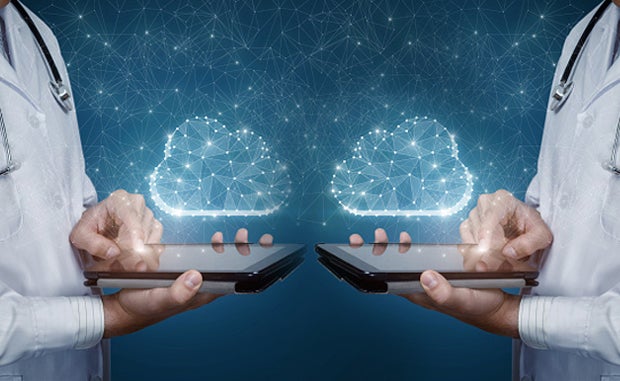

Digital Transformation’s Next Wave: Creating a Mirrored World

Whatever lines existed among health care operational, clinical and digital strategies before the pandemic all but disappeared as organizations rapidly transformed at scale.
That experience has had a profound impact on the way many health care executives now look at innovation, technology investments, partnerships and workforce productivity. Data from the Accenture Digital Health Technology Vision 2021 survey illustrate the shift in thinking, actions and what’s possible going forward.
For example, 87% say digital twins are becoming essential to their organization’s ability to collaborate in strategic ecosystem partnerships. A digital twin is a virtual model designed to accurately reflect a physical object. Digital twins use technologies like the internet of things, data streaming, 5G, etc., to gather, visualize and contextualize data from across physical assets, bridging operations and digital capabilities, and opening new partnership opportunities.
Creating Intelligent Digital Twins
On the clinical side, digital twins can model future scenarios, such as surgical simulations, or help with medical education, research and care delivery. Also, they can help to improve business operations through modeling digital representations of facilities and workers while tracking and tracing supplies to match supply and demand.
 This mirrored world can give leaders the power to bring data and intelligence together at unprecedented scale and help to answer big-picture questions critical to an organization’s future success. Digital twins that mimic the heart, for example, can allow clinicians and machines to work together to pre-simulate optimal therapies and avoid unnecessary interventions. On the operational side, advanced technologies can optimize scheduling, identify workflow bottlenecks or help predict which types of patients will enter a facility on a given day.
This mirrored world can give leaders the power to bring data and intelligence together at unprecedented scale and help to answer big-picture questions critical to an organization’s future success. Digital twins that mimic the heart, for example, can allow clinicians and machines to work together to pre-simulate optimal therapies and avoid unnecessary interventions. On the operational side, advanced technologies can optimize scheduling, identify workflow bottlenecks or help predict which types of patients will enter a facility on a given day.
Soon organizations that build intelligent twins will be able to interact and collaborate within mirror environments and be able to share designs, information and insights easily across ecosystems and to virtually test innovations in ways not previously possible.
Some organizations already are pursuing twin-enabled visibility with select partners. Oklahoma State University and Ansys, a simulation software developer, have explored using digital twins to more precisely target tumors. By experimenting with digital versions of human lungs and various factors, they found a delivery method that may let physicians increase the accuracy of drug delivery to 90% vs. 20%, common for conventional aerosol methods.
This capability won’t come cheaply or easily. Organizations will need a strong and comprehensive data foundation to access insights. At this stage, however, few have invested to ensure that data are generated, captured, managed and reused consistently at scale, Accenture officials note. But for those with the proper discipline, resources and partners going forward, the payoffs could be huge.
3 Ways to Prepare for Health Care’s Mirrored Future
Audit Data Practices
Evaluate the tools and technologies you use and deconstruct data silos. Digital simulation tools need a healthy data supply to be effective, so look for ways to capture data from the internet of things and build streaming analytics capabilities.
Explore How Digital Twins Can Transform Innovation Processes
Develop key clinical and operational use cases so that digital twins can generate the greatest impact to drive innovation and breakthroughs.
Engage Partners
Design digital twins from the outset with the intent to share them across the ecosystem. Make application-program interfacing a priority and build a short list of potential digital twin-driven partnerships.



